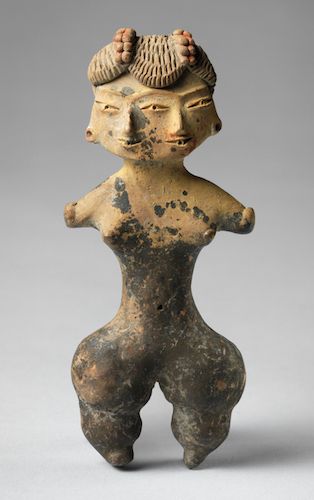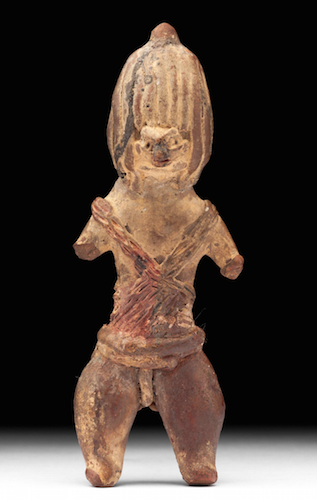Tlatilco Figurines
Intimate and lively
Tlatilco figurines are wonderful small ceramic figures, often of women, found in Central Mexico. This is the region of the later and much better-known Aztec empire, but the people of Tlatilco flourished 2,000-3,000 years before the Aztec came to power in this Valley. Although Tlatilco was already settled by the Early Preclassic period (c. 1800-1200 B.C.E.), most scholars believe that the many figurines date from the Middle Preclassic period, or about 1200-400 B.C.E. Their intimate, lively poses and elaborate hairstyles are indicative of the already sophisticated artistic tradition. This is remarkable given the early dates. Ceramic figures of any sort were widespread for only a few centuries before the appearance of Tlatilco figurines.
Appearance
The Tlatilco figurine at the Princeton University Art Museum has several traits that directly relate to many other Tlatilco female figures: the emphasis on the wide hips, the spherical upper thighs, and the pinched waist. Many Tlatilco figurines also show no interest in the hands or feet, as we see here. Artists treated hairstyles with great care and detail, however, suggesting that it was hair and its styling was important for the people of Tlatilco, as it was for many peoples of this region. This figurine not only shows an elaborate hairstyle, but shows it for two connected heads (on the single body). We have other two-headed femaile figures from Tlatilco, but they are rare when compared with the figures that show a single head. It is very difficult to know exactly why the artist depicted a bicephalic (two-headed) figure (as opposed to the normal single head), as we have no documents or other aids that would help us define the meaning. It may be that the people of Tlatilco were interested in expressing an idea of duality, as many scholars have argued.

The makers of Tlatilco figurines lived in a large farming village near the great inland lake in the center of the basin of Mexico. Modern Mexico City sits on top of the remains of the village, making archaeological work difficult. We don’t know what the village would have looked beyond the basic shape of the common house—a mud and reed hut that was the favored house design of many early peoples of Mexico. We do know that most of the inhabitants made their living by growing maize (corn) and taking advantage of the rich lake resources nearby. Some of the motifs found on other Tlatilco ceramics, such as ducks and fish, would have come directly from their lakeside surroundings.

